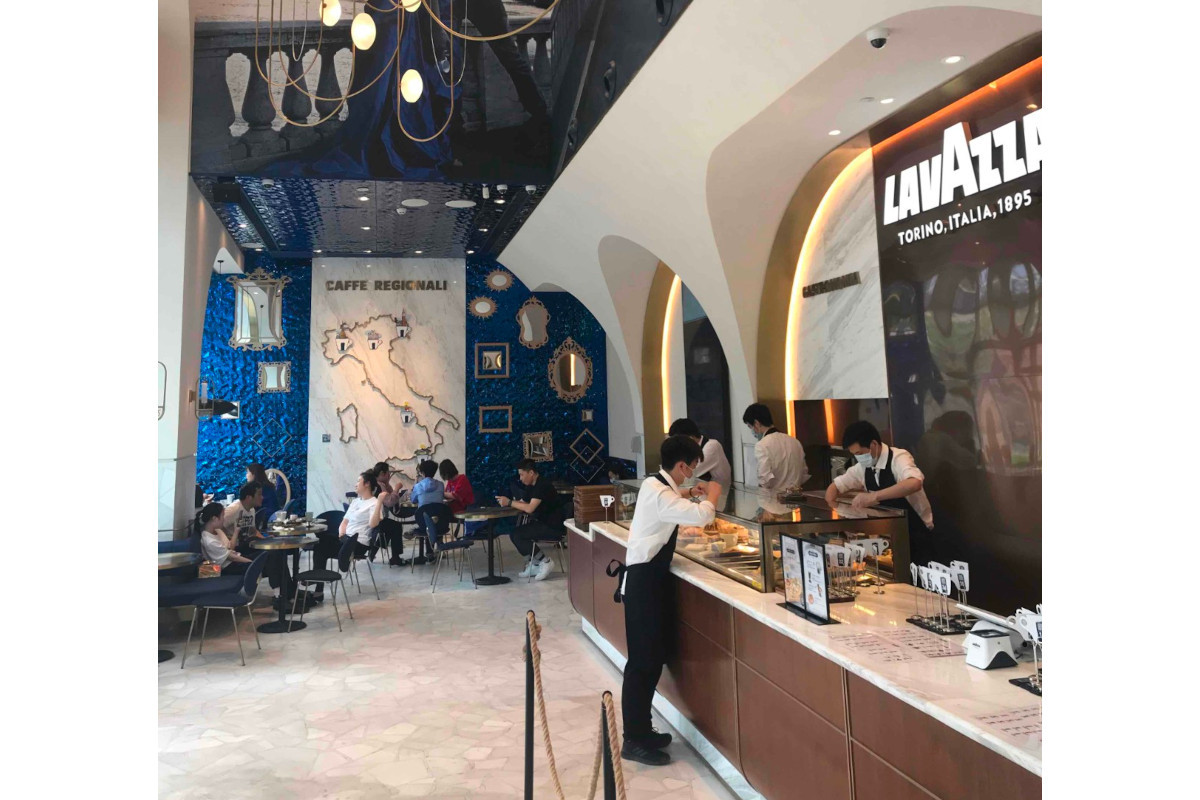
In April 2020, Yum China and Lavazza established a joint venture to jointly manage the Italian leading coffee company’s operations in China. After opening its first flagship coffee store outside of Italy in Shanghai, Lavazza has quickly won favor with consumers thanks to its high-quality Italian coffee, innovative cuisine, and engaging Italian cultural atmosphere.
By tackling the Chinese market, Lavazza has also accelerated the store openings in China. As of June 30 this year, the company had opened 14 stores in Shanghai. The first one in Hangzhou was opened in early August, and the number of Lavazza stores in the second quarter tripled. Currently, Lavazza has expanded to more than 20 stores in China and aims to sell 130 million cups of Italian coffee.
The goal is to open 1,000 stores by 2025. The two parties will jointly put $200 million into the joint venture to provide funding for future development. The partnership will also become Lavazza’s exclusive distributor in mainland China, introducing more products from the brand’s portfolio to the international markets.

OMNI-CHANNEL MARKETING AND INTRA-SECTOR COLLABORATIONS
Since the opening of the first Lavazza store in Beijing, there has been a steady flow of customers. The success depends on the wide variety of products, and the attention paid to designing them to suit Chinese customers. The Beijing store has also launched a market-specific orange steam cold brew.
PREMIUM COFFEE FOR CHINESE CONSUMERS
In terms of price and product category, Lavazza’s brand positioning is premium, with a unit price per customer of more than 50 yuan, and its products cover different categories such as coffee, desserts, and cocktails. In addition, the combination of liquor and coffee brings a distinctive Italian coffee combination to China. Consumers can experience a variety of coffee and alcohol combinations, and enjoy every moment between being sober and slightly drunk.

Lavazza is also present on the main Chinese social-media channels, where it is developing an omnichannel strategy to attract Chinese consumers both online and offline. Its products aim to create a blend of Italian and Chinese characteristics. Stores have been built to meet this goal too. The Lavazza flagship store in Shanghai is like “a mini espresso museum”. From coffee bean tasting to the history of the first espresso machine, consumers get a whole view of the Italian coffee culture.
THE COFFEE MARKET IN CHINA
In China, the penetration rate of coffee is still very low. According to the latest data, the size of China’s coffee market will increase to 1 trillion yuan (equal to $157 billion) by 2025. In recent years, China’s coffee consumption has reached a 15% consumers’ quota. The fast growth rate of 20% is far higher than the global average growth rate of 2%, and from the perspective of annual coffee consumption per capita, there is still considerable room for growth in the Chinese market.

The soluble coffee segment holds a significant share, mainly due to its convenience. Increased household spending, changing lifestyles, and acceptance of Western culture trends by many middle-class consumers have contributed to the increased demand for instant coffee across the country.
